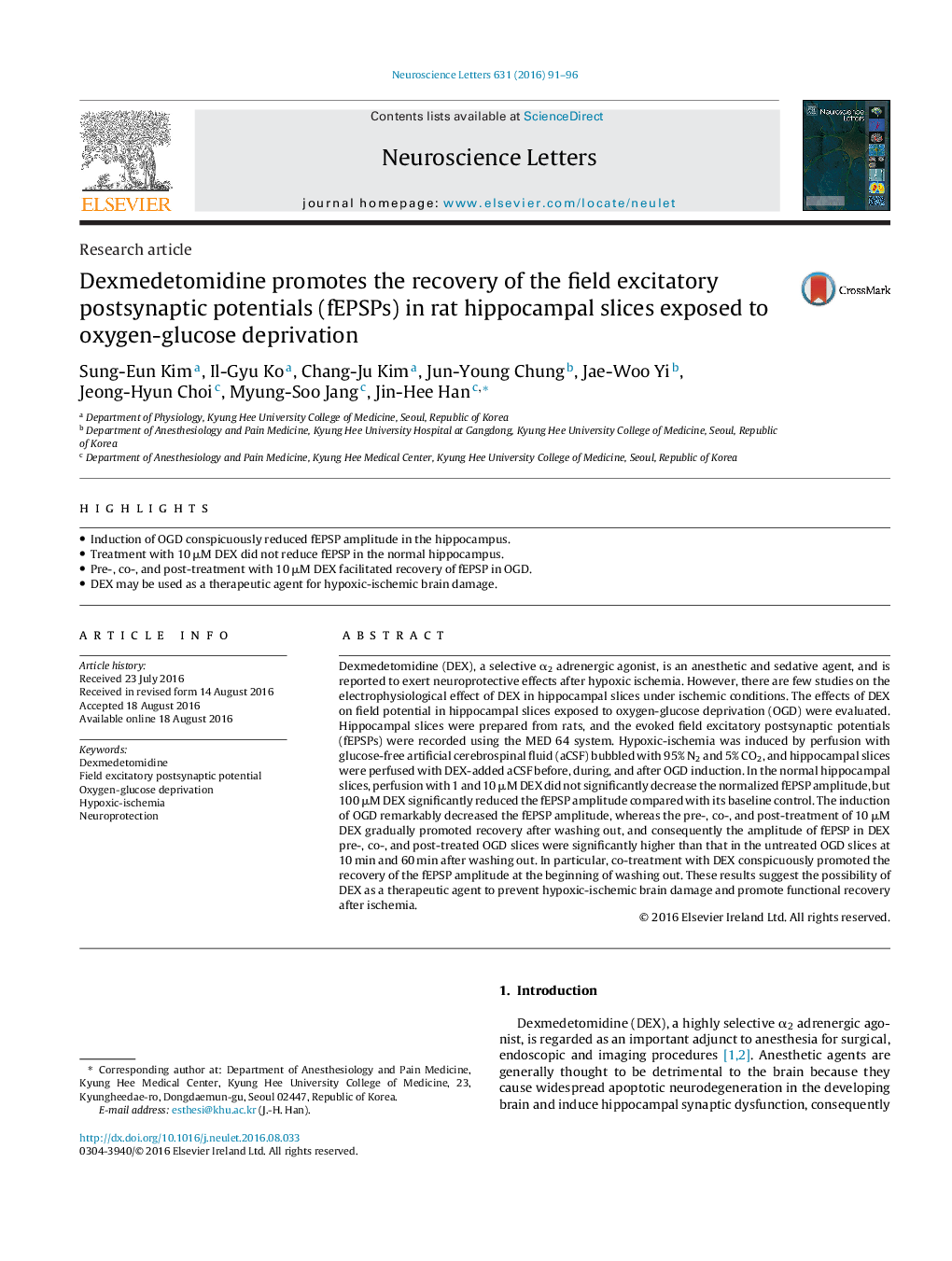| کد مقاله | کد نشریه | سال انتشار | مقاله انگلیسی | نسخه تمام متن |
|---|---|---|---|---|
| 6279110 | 1615068 | 2016 | 6 صفحه PDF | دانلود رایگان |

- Induction of OGD conspicuously reduced fEPSP amplitude in the hippocampus.
- Treatment with 10 μM DEX did not reduce fEPSP in the normal hippocampus.
- Pre-, co-, and post-treatment with 10 μM DEX facilitated recovery of fEPSP in OGD.
- DEX may be used as a therapeutic agent for hypoxic-ischemic brain damage.
Dexmedetomidine (DEX), a selective α2 adrenergic agonist, is an anesthetic and sedative agent, and is reported to exert neuroprotective effects after hypoxic ischemia. However, there are few studies on the electrophysiological effect of DEX in hippocampal slices under ischemic conditions. The effects of DEX on field potential in hippocampal slices exposed to oxygen-glucose deprivation (OGD) were evaluated. Hippocampal slices were prepared from rats, and the evoked field excitatory postsynaptic potentials (fEPSPs) were recorded using the MED 64 system. Hypoxic-ischemia was induced by perfusion with glucose-free artificial cerebrospinal fluid (aCSF) bubbled with 95% N2 and 5% CO2, and hippocampal slices were perfused with DEX-added aCSF before, during, and after OGD induction. In the normal hippocampal slices, perfusion with 1 and 10 μM DEX did not significantly decrease the normalized fEPSP amplitude, but 100 μM DEX significantly reduced the fEPSP amplitude compared with its baseline control. The induction of OGD remarkably decreased the fEPSP amplitude, whereas the pre-, co-, and post-treatment of 10 μM DEX gradually promoted recovery after washing out, and consequently the amplitude of fEPSP in DEX pre-, co-, and post-treated OGD slices were significantly higher than that in the untreated OGD slices at 10 min and 60 min after washing out. In particular, co-treatment with DEX conspicuously promoted the recovery of the fEPSP amplitude at the beginning of washing out. These results suggest the possibility of DEX as a therapeutic agent to prevent hypoxic-ischemic brain damage and promote functional recovery after ischemia.
Journal: Neuroscience Letters - Volume 631, 19 September 2016, Pages 91-96